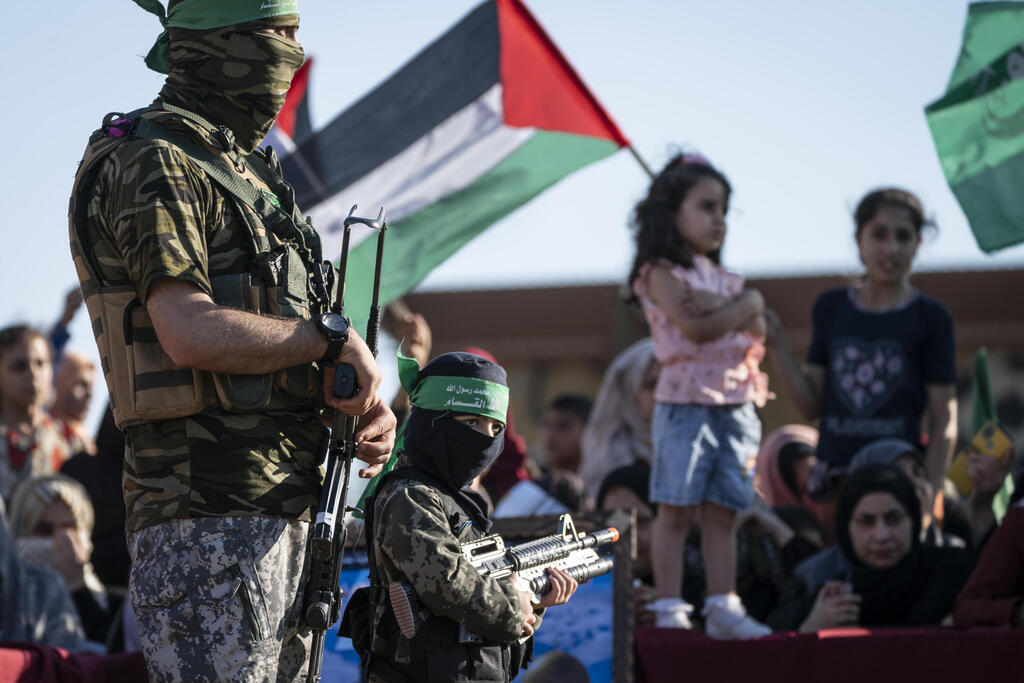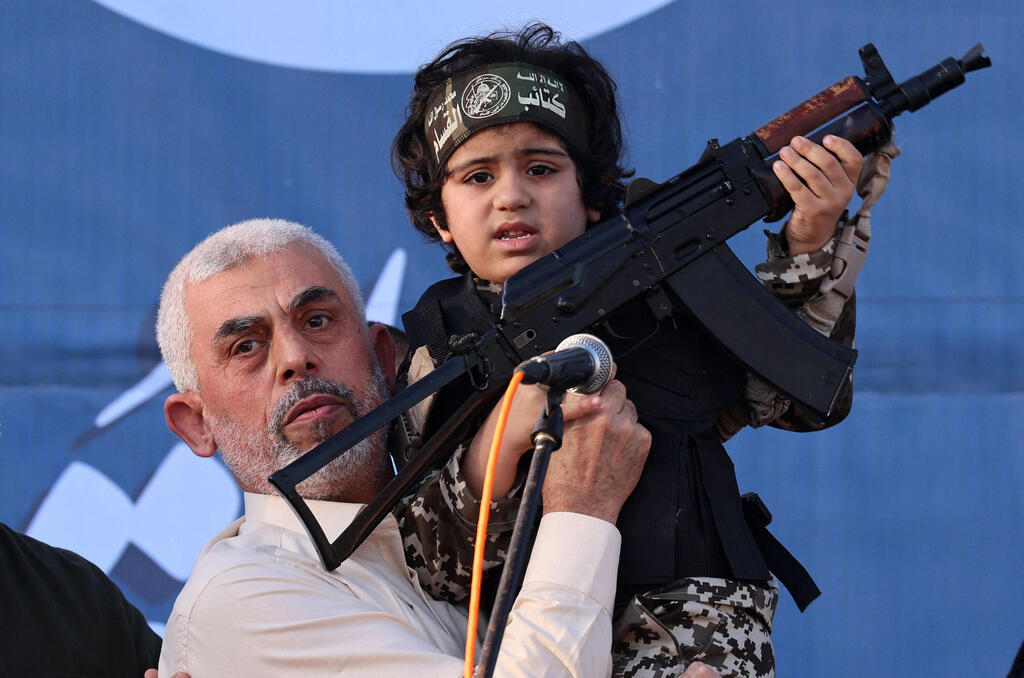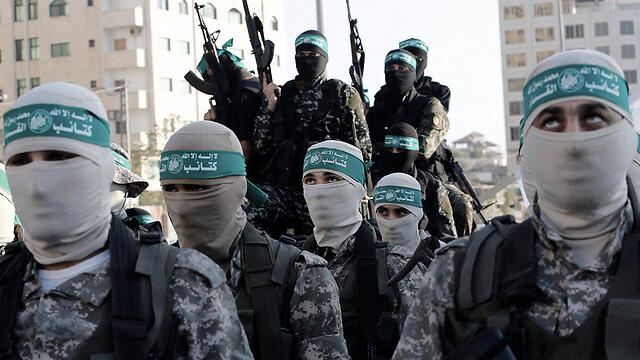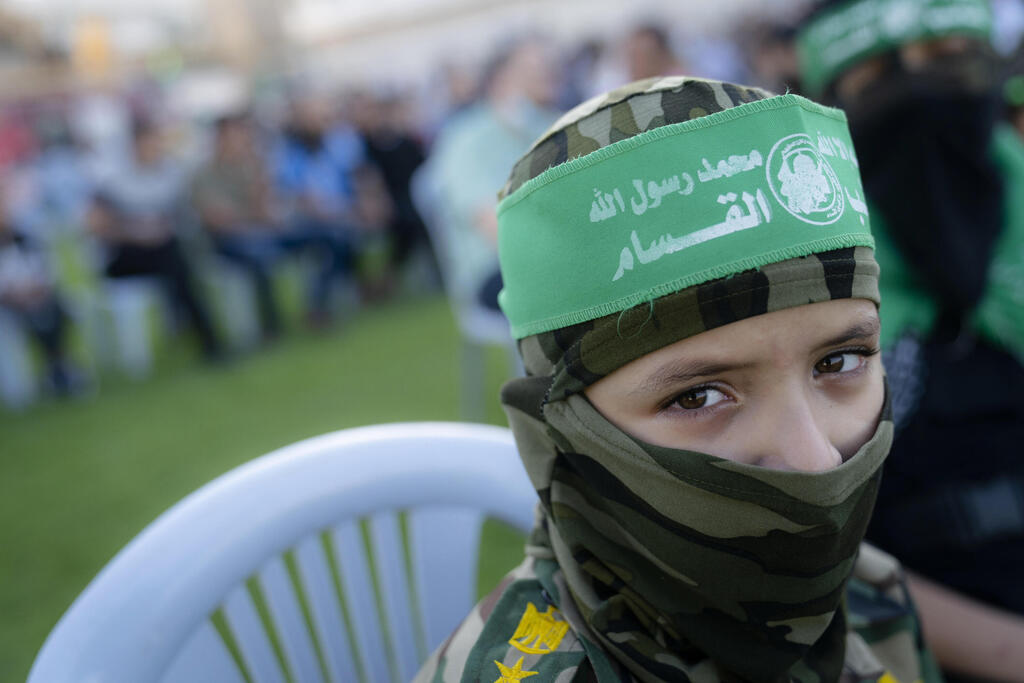The October 7 massacre is a consequence of a string of strategic errors made from the Oslo Accords onward. However, the history of the Gaza Strip and the sequence of events that led up to this fiasco dates far back from there. How did we reach a situation where Hamas effectively took over the Gaza Strip? We examined this critical question in our research paper, Gaza 101 by the IDSF’s Research Department.
Egypt ruled the Strip since the establishment of the State of Israel in 1948 until the Six-Day War, despite never having annexed it. From 1967 to 1994 Israel imposed military control in the Strip and the local governors were accountable to the Israeli Civilian Administration. Although Israel suffered from terrorism spanning the Fedayeen to the First Intifada, the terrorism in Gaza amounted to little more than “sticks and stones” terrorism. Only rarely were firearms used.
4 View gallery


Children at a rally days after a cease-fire was reached in an 11-day 2021 war between Gaza's Hamas rulers and Israel
(Photo: AP)
As part of the Oslo Accords, civilian and security control over virtually the whole of the territory was handed over to the newly established Palestinian Authority. This was part of the “vision” of transforming the Gaza Strip into a Middle Eastern Singapore.
However, immediately after the Accords were signed, the number and quality of the terrorist attacks in the Strip increased dramatically. The Gaza Strip advanced from the “stone age”, quite literally, to become the main terrorist base in the Middle East. The IDF, which pre-Oslo had driven around central Gaza in regular private cars, now needed to resort to entire brigades including tanks, APCs and the Air Force, just to get around.
This was due, on the one hand, to a massive influx of terrorists and weapons from outside the Strip, while on the other hand, it was due to the numerous restrictions the Accords had imposed on Israel’s freedom to operate there. Under the Palestinian Authority, a full-scale military industry was set up in Gaza. At the same time, Hamas, which was established as a movement just a few years earlier, gained more and more power and supporters.
There are many reasons for this shift. They include the increasing exasperation with the corruption of the PLO personnel, who had arrived in the Strip from Tunis following the Oslo Accords. Shortly after the Palestinian Authority unleashed the Second Intifada (at the end of 2000), Hamas began launching homemade rockets into Israeli settlements. These were relatively amateurish devices at first. However, things escalated into anti-tank fire, mortar fire, smuggling tunnels and incendiary tunnels, countless attacks, sniper fire and more professionally built rockets.
The loss of security control and the threat to the communities inside and surrounding the Strip necessitated reconquest of the Strip by the IDF along the same lines as the way the West Bank was handled in Operation Defensive Shield. However, instead, Ariel Sharon’s government chose to capitulate to the terrorists.
Israel’s partial presence in the Strip came to an end in the summer of 2005 in the form of a unilateral disengagement. The so-called experts claimed that the disengagement would improve Israel’s security situation and increase the chances for a peace deal with the Palestinians. What happened in reality was that the withdrawal signaled to the Palestinian terrorists that it was possible to triumph over Israel through sheer brute force.
It was not long before the entire State of Israel found out that this was yet another severe mistake for which we are paying dearly in blood to this day. Without the Israeli presence and with a direct link to Egypt, weapons smuggling into the Gaza Strip advanced in leaps and bounds. In the aftermath of the military withdrawal, a terrorist army of 35,000 terrorists was built in the Gaza Strip. Underground cities were built the likes of which the world has never seen, and countless weapons and thousands of launchers were amassed.
And as if all these errors were not enough, the United States insisted on holding elections in the Gaza Strip. An election in which Hamas emerged victorious winning 76 seats out of 132. The Palestinian Authority found itself being maneuvered onto a warpath with Hamas and ordered the disbanding of parliament, which had been elected in a free and fair election.
The internal rift within the Gaza Strip climaxed in a military takeover by Hamas in 2007. Hamas brutally suppressed any opposition by shooting behind the knees, hurling people off rooftops, dragging corpses through the Gaza streets and other such atrocities. Needless to say, ever since Hamas ascended to power, there have been no more elections.
Throughout all the years Hamas has ruled the Gaza Strip, it has been receiving huge amounts of financial aid from international organizations such as the United Nations (particularly UNRWA), the European Union, the United States and the Arab states.
Many of the Strip's residents are directly employed by Hamas or in schools and organizations managed by UNRWA, which is in effect an offshoot of Hamas. Hamas has used the UNRWA centers, its schools, hospitals and other civilian buildings and facilities for its terrorist purposes in the same way they have been exploiting the humanitarian aid and building materials entering the Strip - all at the expense of the ordinary residents of the Strip.
Hamas has devoted considerable efforts to educating the Strip’s children for terrorism while encouraging them to join the jihad and praising anti-Jewish violence. This project of Hamas has given rise to a new, much more radical generation of Palestinians, who have been brought up on a diet of Hamas ideology and Zionist-hating. Financial incentives were granted to those who volunteered to carry out terrorist attacks, along the same lines as the payments made to terrorists from the Palestinian Authority, which provides the terrorists and their families annuities and bonuses for murdering Jews.
The Israeli approach to Gaza was centered mainly around containment. As far as the decision-makers were concerned, Gaza was not regarded to be a strategic threat. Rather it was a recurring nuisance requiring periodic cycles of fighting to restore the deterrence against Hamas in the short term.
The senior Israeli security forces personnel, who were totally immersed in the concept that it was possible to live alongside Hamas, believed financial incentives and diplomatic pressure were sufficient to put off the next conflict. This - despite being fully aware that throughout the lulls between the flare-ups, Hamas was pressing on with building its strength and acquiring new capabilities.
4 View gallery


Hamas leader in Gaza Yahya Sinwar holds up the child of an Al-Qassam Brigades fighter who was killed in fighting with Israel
(Photo: AFP)
Meanwhile, the Israeli public became extremely sensitive to the loss of lives among its armed forces. Add to this the trauma from the Gilad Shalit kidnapping and the atrocious deal struck for his release. The result of all these was that there was no public legitimacy for a large-scale ground offensive in Gaza. It is therefore no surprise the Israeli government used a hesitant approach due to the danger of soldiers being kidnapped, the high cost of loss of life and the damage to public morale. In other words, we got addicted to the absence of gunfire.
Instead of dealing with Gaza thoroughly, the same way it dealt with the West Bank in Operation Defensive Shield in 2002, Israel concentrated its efforts on building its defenses. The Iron Dome anti-rocket system, an underground barrier to block construction of terrorist tunnels crossing underground into Israeli territory and a technologically-advanced border fence equipped with state-of-the-art sensors and means of observation were all developed, built and deployed to prevent infiltration. Sadly, October 7 proved just how ineffective all this was.
 Dr. Jacob Rimer
Dr. Jacob RimerIt is absolutely unacceptable that the destructive consequences of the Oslo Accords, the disengagement and the policy of containment, should be resumed. The security risks Israel took upon itself in the past have outlived their usefulness. If the same build-up of military might had taken place in the West Bank the way it had in the Gaza Strip, the State of Israel would not have been able to emerge victorious and the Zionist project would have met its demise.
We are now left with no alternative other than to eradicate the Hamas terrorist organization down to the last terrorist standing, and to reserve for ourselves long-term security and freedom of operation in Gaza. This is the only way we will be able to ensure that the Gaza Strip never again mounts a security threat to the population in the State of Israel.
Dr. Jacob Rimer is a senior researcher at the IDSF Research Department, a former senior official in the Israeli security apparatus, and an AI, cyber and security consultant




